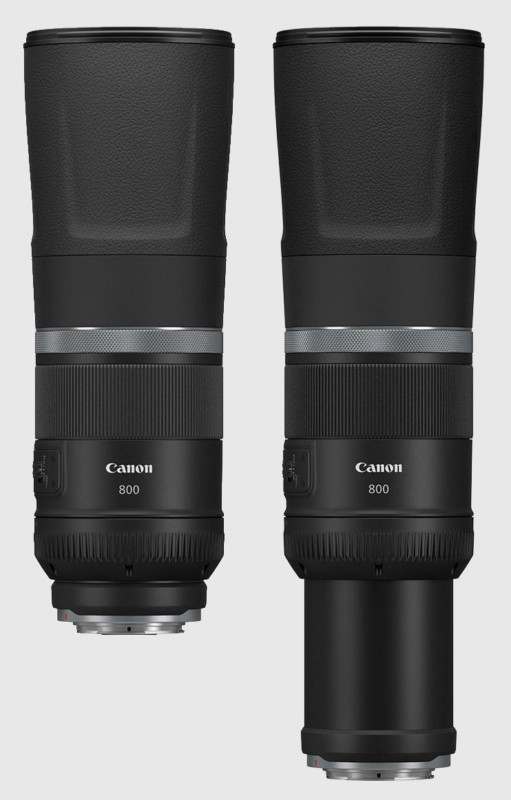![]()
Back in July, Canon unveiled its new RF 600mm f/11 and RF 800mm f/11 lenses. If you’re familiar with Canon’s vintage lenses, you may have noticed that the new lenses share interesting similarities with Canon’s R 600mm f/5.6 and 800mm f/8 lenses from 1960.
DC Watch has published an interesting new interview with the Canon team behind the lenses, including Kengo Iezuka, the head of lens product planning.
“Excuse me for this my boyhood story,” Iezuka says. “At that time, I wanted to take a picture of a wild bird, a little egret, but I couldn’t buy a super-telephoto lens because it was too expensive. I tried to make a telephoto lens with a close-up lens with a focal length of 400 mm, but it didn’t look good, and I wondered why it didn’t look so good.
“I knew that many people gave up what they wanted to shoot and what they wanted to shoot because they couldn’t buy a super-telephoto lens or couldn’t carry it because it was big and heavy.”
Super-telephoto lenses are known for being extremely large, heavy, and expensive, and Iezuka wanted to address all three of those characteristics to open the door of super-telephoto photography to a much wider range of photographers.
“I wanted to create specs that can only be achieved with the EOS R system and enjoyment through new user experiences,” Iezuka tells DC Watch. “Among them, I wondered if I could break through the three barriers of ‘heavy, big, and expensive’ for super-telephoto lenses. Canon’s dual-pixel CMOS AF is strong against AF even in the dark, so a super-telephoto lens with a large F-number may be possible.”
Looking back through the history of Canon lenses, Canon’s first SLR system, the R mount, had super-telephoto lenses that caught Iezuka’s eye.
“[T]he R mount also had a ‘slender’ super-telephoto lens like the 600mm / 800mm f/11,” Iezuka says. “The optical system is as simple as a telescope, the focusing is bellows, and the weight is as light as 2 kg.”
While those vintage R lenses were expensive — the 800mm f/11 had a launch price of ¥134,900, or $7,331 in today’s money when adjusted for inflation — their design helped inspire the design of the new RF 600mm f/11 and RF 800mm f/11.
The new RF lenses are compact, lightweight, and (relatively) affordable. They use an extending design that allows them to be as small as possible when not in use, measuring just 7.85 inches (20cm) and 11.09 inches (28cm) long, respectively. With a fixed f/11 and lacking aperture blades, the lenses weigh 2.05 lbs (930g) and 2.77 lbs (1260g), respectively. And they have price tags of $699 and $899, respectively.

“With [these lenses], I thought we may be able to make the super-telephoto lens familiar by incorporating a DO lens and a collapsible mechanism to shorten the total length, making it easy to put in a camera bag or backpack, and reducing the cost,” Iezuka tells DC Watch.
“With the EOS R system, I think I was finally able to get closer to the dream super-telephoto world,” he continues. “I would like you to enjoy shooting things that you couldn’t shoot before and the expressions you wanted to shoot with this 600mm / 800mm f/11 lens.”
Head on over to DC Watch if you’d like to read the full interview (which is in Japanese, but you can find a Google translated version here).
(via DC Watch via Digital Camera World)
Author: Michael Zhang
Source: Petapixel



